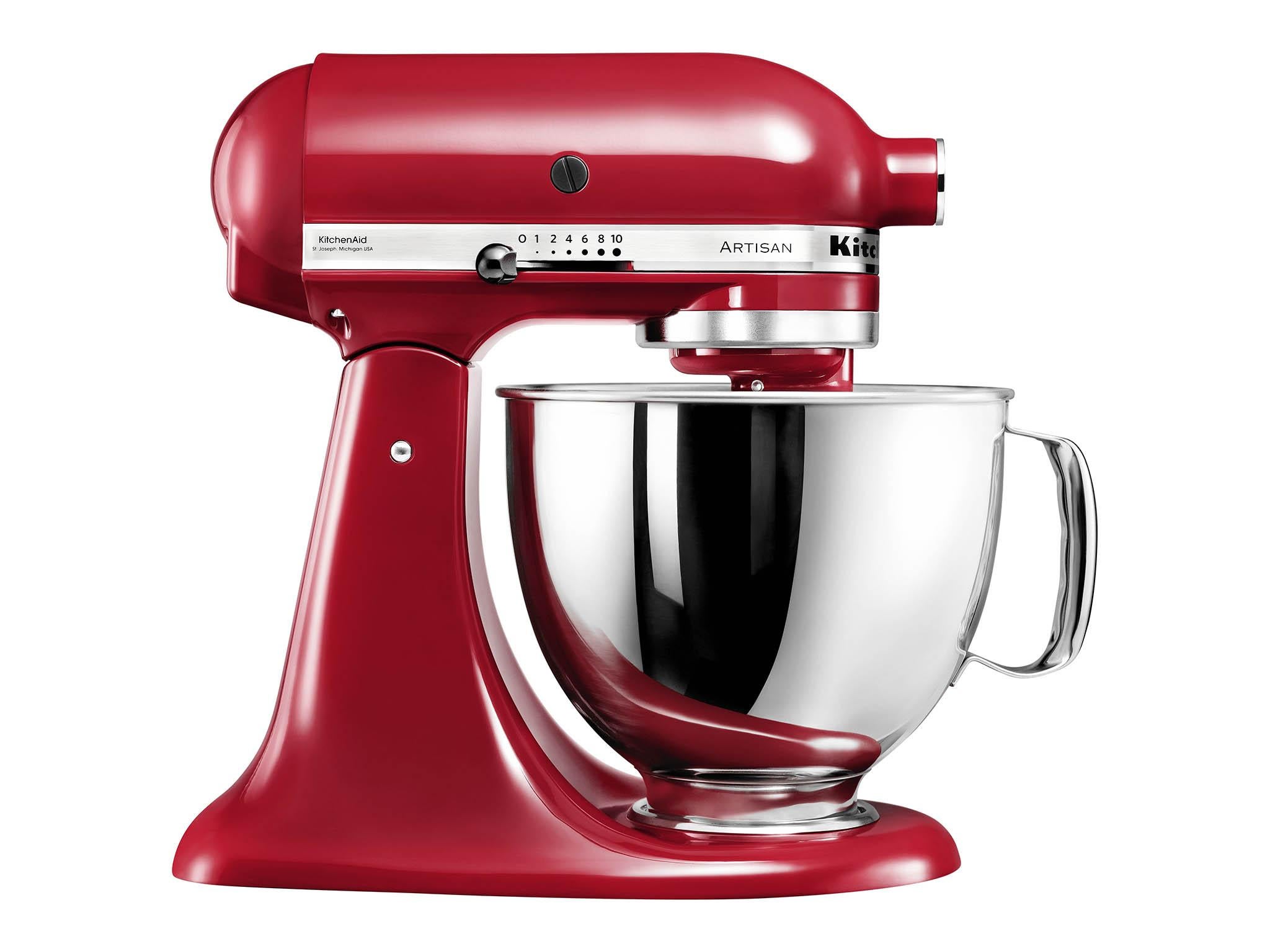Why a KitchenAid mixer deserves a place on your worktop
Earning its spot on the counter, it’s got an attachment for everything and is neither too complicated for cookery novices nor too basic for those whose culinary skills excel far beyond whipping up some cream

Weighing in at over 11 kilos, my KitchenAid Artisan stand mixer is not to be taken lightly. Once I unpacked the box and placed it on the counter it was there to stay. Of course, I could keep it in a cupboard and lug it out when I need it, but I already go to the gym, so who needs the workout? And more to the point, why would I want to keep it hidden away? It’s a kitchen workhorse that’s more than earned its spot on the counter over the years.
Of course KitchenAid isn’t just stand mixers. Today you can find every bit of kitchen kit you need whether it’s an ice cream scoop emblazoned with the KitchenAid logo or a sous vide machine. Every piece they produce screams out solid, substantial and here to stay. No wonder they’re such a coveted brand for everyone from don’t-know-how-to-boil-water-cooks to the-been-around-the-block-and-have-the-knife scars-to-prove-it-variety.
But it’s the stand mixer that for me, is synonymous with KitchenAid. The brand dates back to 1919, when an engineer in Ohio in the United States developed the “H5” – also known as the first eggbeater designed for the home cook. The story goes that the wife of one of the company directors was testing it and was so pleased that she said, “I don’t care what you call it, it’s the best kitchen aid I’ve ever had.” The name KitchenAid was born and it’s been a leader in home electricals ever since. Today, it’s part of the Whirlpool Corporation, the number one major appliance manufacturer in the world.
The stand mixer followed the eggbeater and in 1937, a man named Egmont Arens (1888-1966) designed the original tilt-head stand mixer for KitchenAid. Arens was an interesting character. As a child he had tuberculosis and was sent to live in New Mexico, a place that attracted TB sufferers due to its dry climate. He later became a sports writer before moving to New York City where he was editor of Creative Arts magazine and Vanity Fair. He was also a world-renowned industrial designer who created not only the iconic “K” mixer for KitchenAid but also later a meat slicer.
The true tribute to his talent is the fact that the KitchenAid on my countertop is almost exactly the same design he created. It’s not hard to see why. It’s not only elegant with smooth curves and clean lines but also incredibly durable and easy to use. It’s idiot proof to operate – slide it from “off” to “on” and then continue sliding to increase the speed with 10 settings in total. You can tilt the top back so you can easily release the blades or scrape back the bowl when you want.
What else makes a KitchenAid mixer such a pleasure to use? It’s constructed of die-cast metal so it’s super solid and you can turn it up to the top speed without it shaking or moving on your counter. It’s got a direct drive motor in the head of the machine so the power goes where you want it and the machine never overheats or strains. And it’s got an amazing capacity. You can do some serious mixing with a KitchenAid without ever worrying that it’s going to overflow.
The product specs assure me that in a 4.8 litre mixer you can make dough for nine dozen biscuits, beat 12 eggs or 1 litre of cream, 3.2 kilos of mashed potatoes, or 2 kilos of bread dough. I’ve never tested it to these limits but I’ve given it a run for its money and it’s never disappointed. I use it to make batters, doughs, and whisk egg whites and cream. The design is ingenious because while the bowl is large, the beaters are able to draw in the ingredients from the sides and bottom so you don’t find yourself stuck with hidden pockets of dry flour in your cake batter.
Standard kit with a KitchenAid includes a wire whisk, a dough hook and a flat beater. There are also a variety of attachments you can purchase including a sausage stuffer, ravioli maker and food grinder. I must admit that my uses are more pedestrian but I wouldn’t trade it for baking any day of the week. It comes in red, black, almond cream (the most popular colour) and silver.
The range starts at a retail price of £449 for the KitchenAid mini (a cute, smaller version, perfect for size-constrained kitchens) and up to £899 for the Professional 6.9 litre (a beast that could tackle anything). While that’s a jaw-dropping price tag, with KitchenAid you get what you pay for, and for me it’s been – touch wood – a once in a lifetime purchase. My apple green model is no spring chicken but still shows no sign of retiring anytime soon, which is good because I’ve got a batch of biscuits that need to be made.
Subscribe to Independent Premium to bookmark this article
Want to bookmark your favourite articles and stories to read or reference later? Start your Independent Premium subscription today.

Join our commenting forum
Join thought-provoking conversations, follow other Independent readers and see their replies